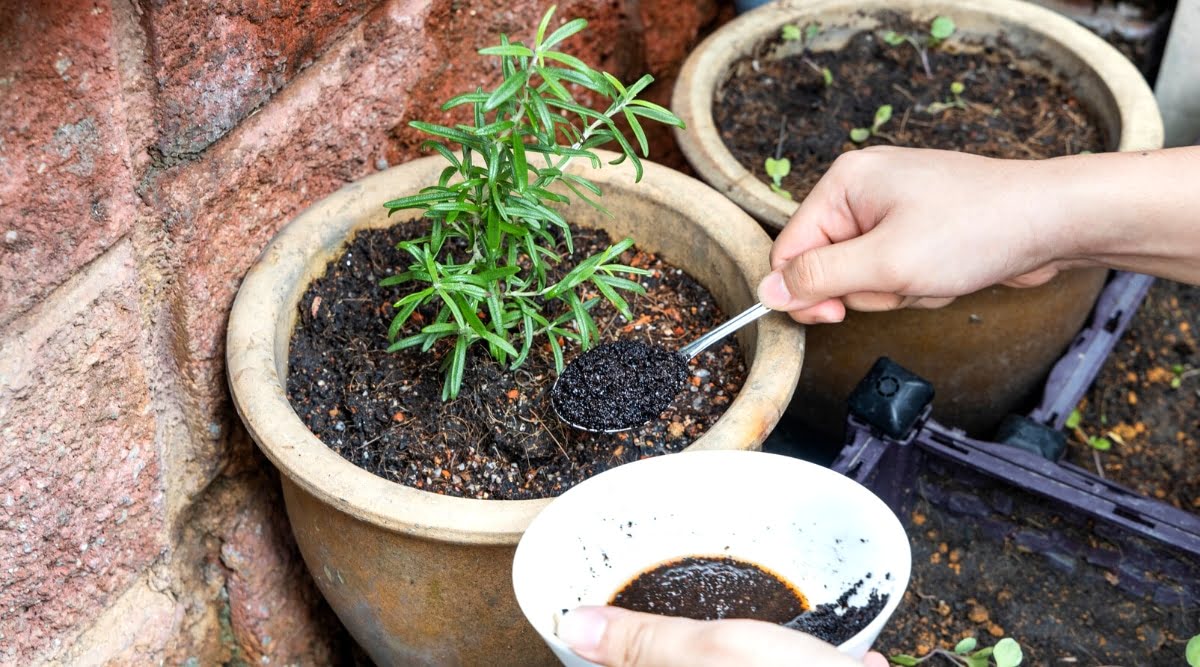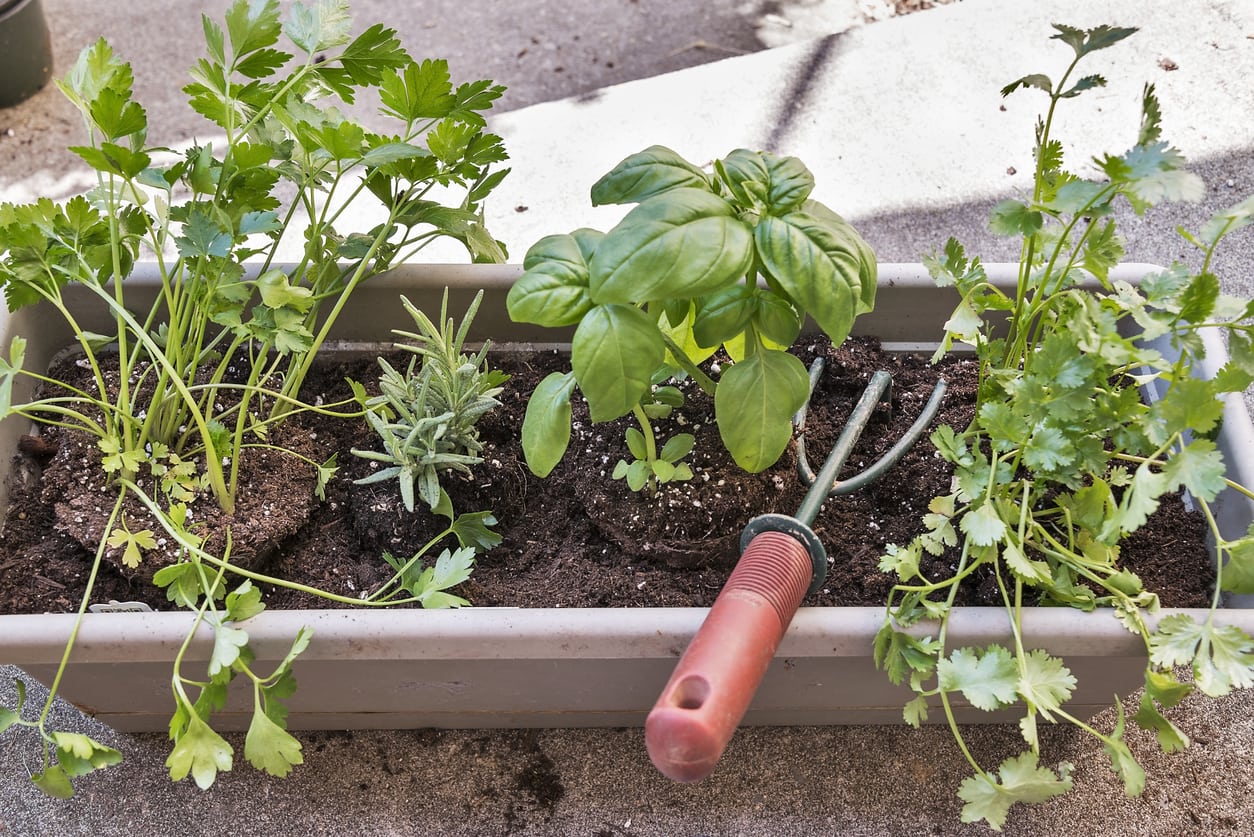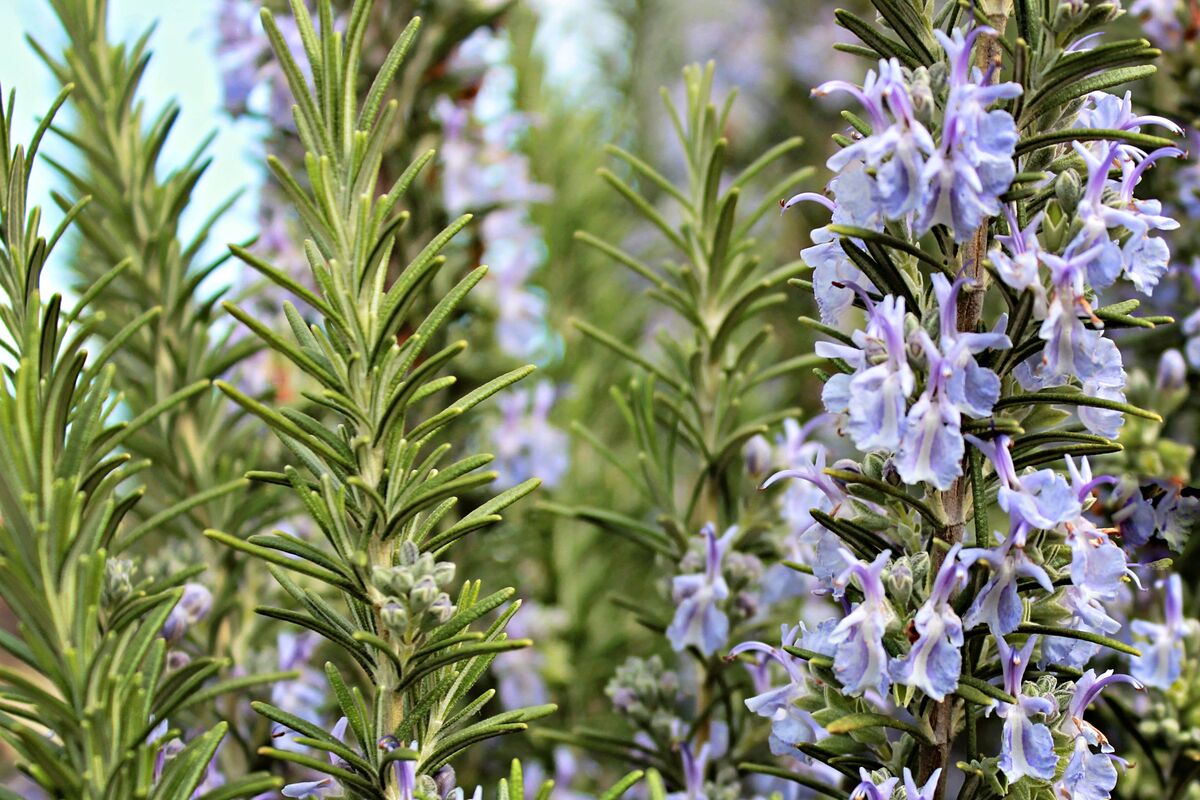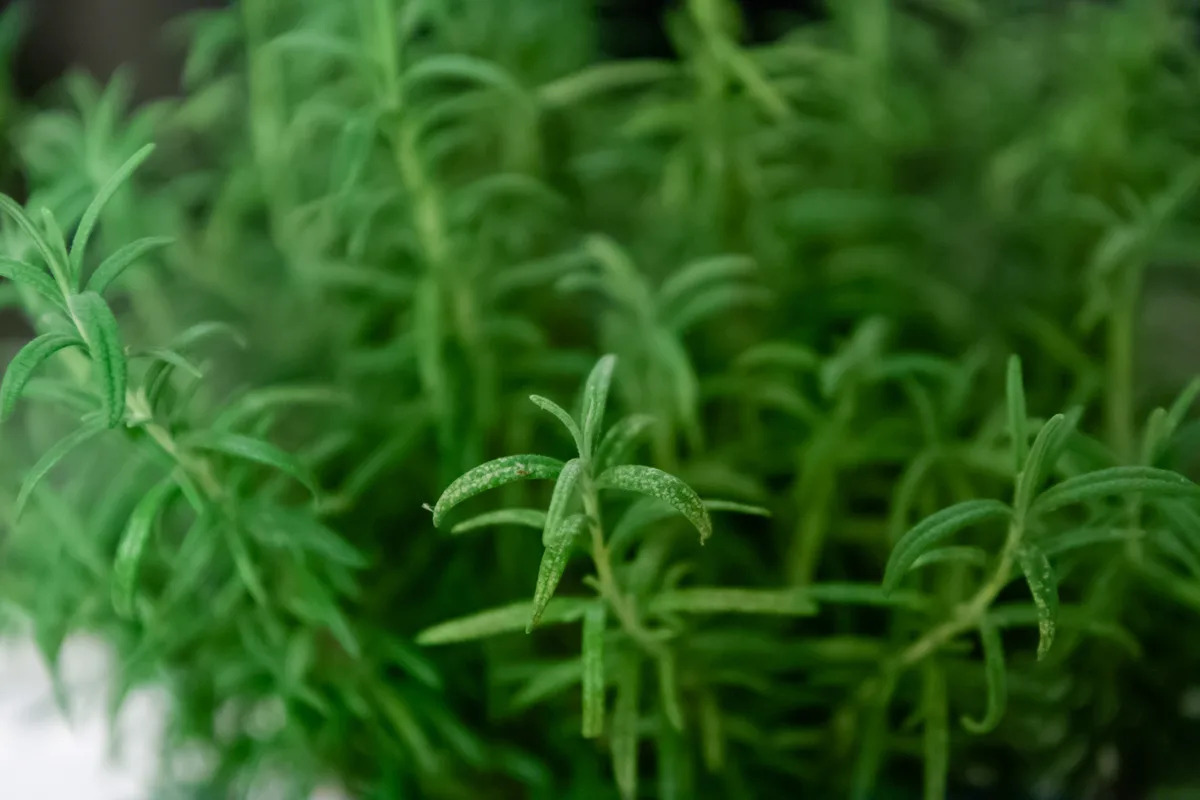Home>Gardening Techniques>Plant Care>How To Fertilize A Rosemary Plant


Plant Care
How To Fertilize A Rosemary Plant
Published: January 27, 2024
Learn the best practices for fertilizing a rosemary plant to ensure healthy growth and vibrant foliage. Explore essential plant care tips for optimal results.
(Many of the links in this article redirect to a specific reviewed product. Your purchase of these products through affiliate links helps to generate commission for Chicagolandgardening.com, at no extra cost. Learn more)
Table of Contents
Introduction
Rosemary is a beloved herb known for its fragrant aroma and culinary versatility. Whether you're growing rosemary in a garden or a container, proper care is essential for its health and vitality. One crucial aspect of nurturing a thriving rosemary plant is providing it with the right nutrients, and fertilizer plays a pivotal role in this regard. In this comprehensive guide, we'll delve into the art of fertilizing rosemary, exploring the plant's nutritional needs, selecting the appropriate fertilizer, and mastering the timing and techniques for application.
Fertilizing a rosemary plant may seem straightforward, but it requires a nuanced understanding of the herb's unique requirements. By grasping the intricacies of rosemary's nutritional needs and adopting the best practices for fertilization, you can ensure that your plant flourishes, yielding an abundance of aromatic foliage for culinary and decorative purposes.
Let's embark on a journey to unlock the secrets of nurturing a vibrant and flourishing rosemary plant through proper fertilization. Whether you're a seasoned gardener or a novice enthusiast, this guide will equip you with the knowledge and insights needed to elevate your rosemary cultivation skills to new heights. So, roll up your sleeves, grab your gardening tools, and get ready to dive into the art and science of fertilizing rosemary!
Understanding Rosemary’s Nutritional Needs
Rosemary, with its evergreen foliage and delicate blue flowers, is a hardy and aromatic herb that thrives in well-drained soil and ample sunlight. To sustain its vigorous growth and aromatic potency, rosemary relies on a balanced intake of essential nutrients. Understanding the specific nutritional requirements of rosemary is fundamental to promoting its overall health and vitality.
As a Mediterranean native, rosemary is accustomed to lean, rocky soils that are relatively low in fertility. This characteristic habitat has shaped the herb’s ability to thrive in nutrient-poor conditions, making it susceptible to fertilizer-related issues if not approached with care. Unlike many other plants, rosemary is sensitive to excessive nitrogen, which can lead to leggy growth and diminished aromatic qualities. Therefore, a balanced and nuanced approach to fertilization is crucial for maintaining the vigor and fragrance of this beloved herb.
Rosemary’s primary nutritional needs revolve around essential macronutrients such as nitrogen (N), phosphorus (P), and potassium (K). Nitrogen is pivotal for promoting lush foliage, but an excess of it can compromise the plant’s flavor and aroma. Phosphorus supports robust root development and flowering, while potassium contributes to overall plant health and resilience.
Furthermore, rosemary requires micronutrients, including iron, magnesium, and calcium, to support various physiological processes. Iron is essential for chlorophyll production, magnesium aids in enzyme activation, and calcium is crucial for cell wall structure and integrity. Deficiencies in these micronutrients can manifest as yellowing leaves, stunted growth, and diminished aromatic potency.
By gaining insights into rosemary’s nutritional needs, you can tailor your fertilization approach to meet its specific requirements, fostering a lush and aromatic herb that enhances both culinary delights and ornamental displays.
Choosing the Right Fertilizer
When it comes to fertilizing rosemary, selecting the appropriate fertilizer is paramount for nurturing a healthy and aromatic herb. The ideal fertilizer should provide essential nutrients while avoiding an overabundance of nitrogen, which can compromise the plant’s flavor and fragrance. Understanding the key factors to consider when choosing a fertilizer will empower you to make an informed decision that aligns with the specific needs of your rosemary plant.
First and foremost, opt for a well-balanced, slow-release fertilizer with a lower nitrogen content compared to phosphorus and potassium. A balanced fertilizer, such as a 10-10-10 or 5-10-5 blend, ensures that the plant receives a measured and sustained supply of essential nutrients without an excessive nitrogen influx. Additionally, slow-release fertilizers provide a steady nutrient release over an extended period, promoting consistent growth and aroma development while minimizing the risk of nutrient leaching.
Consider organic fertilizers as a favorable option for nurturing rosemary. Organic fertilizers, derived from natural sources such as compost, fish emulsion, or seaweed extracts, offer a gentle and sustainable approach to nourishing the herb. These natural fertilizers contribute to soil health, microbial activity, and overall ecosystem balance, enhancing the long-term vitality of the rosemary plant and its surrounding environment.
Moreover, take into account the pH preferences of rosemary when selecting a fertilizer. Rosemary thrives in slightly acidic to neutral soil conditions, with a pH range of 6.0 to 7.0 being optimal. Therefore, choose a fertilizer that aligns with the herb’s pH preferences, or consider incorporating soil amendments to maintain an ideal pH level for robust growth and aromatic potency.
By carefully evaluating the nutrient composition, release mechanism, and pH compatibility of fertilizers, you can make a discerning choice that supports the holistic well-being of your rosemary plant. With the right fertilizer in hand, you’ll lay the foundation for nurturing a thriving herb that exudes captivating fragrance and culinary allure.
When and How to Fertilize
Timing and application techniques play a pivotal role in the successful fertilization of rosemary, ensuring that the plant receives essential nutrients in a manner that promotes robust growth and aromatic potency. Understanding the optimal timing for fertilization and mastering the art of application are essential components of nurturing a flourishing and fragrant rosemary plant.
For established rosemary plants, the best time to apply fertilizer is in early spring, just before the growing season begins. This timing aligns with the plant’s natural growth cycle, providing it with the necessary nutrients to support vigorous foliage development and aromatic oil production. Avoid fertilizing rosemary in late summer or fall, as this can stimulate tender growth that may be susceptible to frost damage in colder climates.
When applying fertilizer, adopt a measured and deliberate approach to prevent overfeeding the rosemary plant. Begin by lightly scratching the soil’s surface around the plant to loosen it, then apply the fertilizer according to the manufacturer’s instructions. Be mindful not to place the fertilizer directly against the plant’s stem, as this can cause root burn and compromise the herb’s health. After application, gently water the soil to facilitate the gradual release and absorption of nutrients by the plant’s roots.
Consider using a liquid fertilizer diluted to half or quarter strength for potted rosemary plants. This diluted solution provides a gentle yet effective nutrient boost, minimizing the risk of overfertilization in the confined space of a container. Apply the diluted liquid fertilizer every four to six weeks during the growing season, ensuring that the plant receives a consistent and balanced supply of essential nutrients.
It’s important to monitor the plant’s response to fertilization and adjust the frequency and dosage as needed. Excessive fertilizer can lead to nutrient imbalances, leggy growth, and diminished aromatic qualities, while insufficient fertilization may result in stunted growth and pale foliage. By observing the plant’s overall health and growth patterns, you can refine your fertilization regimen to optimize the vigor and aromatic potency of your cherished rosemary plant.
Precautions and Tips for Fertilizing Rosemary
While fertilizing rosemary is essential for promoting its health and vigor, it’s important to approach this task with care and consideration to safeguard the plant’s well-being. By adhering to precautionary measures and implementing best practices, you can ensure that your rosemary plant thrives without being compromised by fertilizer-related issues.
- Use a Balanced Fertilizer: Select a balanced, slow-release fertilizer with a lower nitrogen content to prevent excessive foliage growth at the expense of aroma and flavor.
- Maintain Optimal pH: Regularly monitor the soil pH and adjust it to the slightly acidic to neutral range (pH 6.0 to 7.0) to create an ideal growing environment for rosemary.
- Apply Fertilizer Sparingly: Avoid overfertilizing rosemary, as this can lead to nutrient imbalances, leggy growth, and diminished aromatic potency. Follow the manufacturer’s guidelines for application rates and frequency.
- Water Wisely: After fertilizing, water the soil to facilitate nutrient absorption and minimize the risk of root burn. Ensure that the soil remains consistently moist but well-drained to support the plant’s growth.
- Observe Growth Patterns: Monitor the plant’s response to fertilization, paying attention to its overall health, foliage color, and growth habits. Adjust the fertilization regimen based on the plant’s specific needs and performance.
- Consider Organic Options: Explore organic fertilizers derived from natural sources, such as compost, fish emulsion, or seaweed extracts, to nourish the rosemary plant sustainably and enhance soil health.
- Protect Potted Plants: For potted rosemary, use a diluted liquid fertilizer to avoid overfertilization in the confined space of the container. Apply the diluted solution at reduced frequency to maintain a balanced nutrient supply.
- Monitor Environmental Conditions: Be mindful of temperature fluctuations and seasonal changes when fertilizing rosemary. Avoid fertilizing in late summer or fall to prevent tender growth that may be susceptible to frost damage.
By integrating these precautions and tips into your fertilization practices, you can cultivate a robust and aromatic rosemary plant that enriches your culinary endeavors and garden landscape. With a thoughtful and attentive approach to fertilizing, you’ll nurture a thriving herb that embodies the essence of vitality and fragrance.
Conclusion
As we conclude our exploration of fertilizing rosemary, we emerge with a profound understanding of the nuanced art and science behind nurturing this beloved herb. From comprehending rosemary’s nutritional needs to selecting the right fertilizer, mastering the timing and techniques of application, and embracing precautions and tips, we have embarked on a journey that celebrates the essence of sustainable and aromatic cultivation.
By delving into the intricacies of rosemary’s nutritional requirements, we have unveiled the delicate balance of essential macronutrients and micronutrients that sustain the herb’s vitality and aromatic potency. This understanding has empowered us to make discerning choices when selecting fertilizers, opting for balanced, slow-release formulations that align with rosemary’s pH preferences and ecological harmony.
Moreover, we have honed our knowledge of the optimal timing and application methods for fertilizing rosemary, recognizing the significance of early spring fertilization for established plants and the gentle yet effective approach for potted specimens. By embracing precautionary measures and best practices, we have cultivated a mindful and considerate approach to fertilization, safeguarding the health and fragrance of our cherished rosemary plants.
As we reflect on this journey, we are imbued with a sense of stewardship and reverence for the art of nurturing rosemary. Through our conscientious and informed fertilization practices, we not only foster the well-being of the herb but also cultivate a deeper connection with the natural world and the culinary delights it bestows.
With this knowledge in hand, we embark on a continued voyage of discovery and cultivation, guided by the wisdom and insight gained from our exploration of fertilizing rosemary. As we tend to our thriving plants, we embrace the timeless allure of this aromatic herb, savoring its essence in culinary creations and reveling in the beauty it bestows upon our gardens and living spaces.
May our journey with rosemary inspire a harmonious union of sustenance and fragrance, enriching our lives with the bountiful gifts of nature’s bounty.









